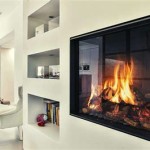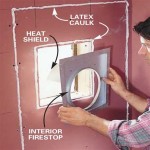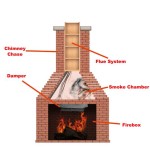Outdoor Linear Fireplaces: Enhancing Outdoor Living Spaces
Outdoor linear fireplaces have become increasingly popular, transforming patios, decks, and gardens into inviting and sophisticated extensions of the home. These sleek and modern fire features offer a compelling blend of aesthetics, functionality, and ambiance, making them a desirable addition to any outdoor living space. Understanding the various aspects of outdoor linear fireplaces, from their design and installation to their fuel options and safety considerations, is crucial for making informed decisions and maximizing their enjoyment.
A linear fireplace, in its essence, is a fire feature characterized by its elongated, horizontal shape. This distinguishes it from traditional square or round fire pits and offers a distinctive visual appeal. The linear design often provides a wider viewing area of the flames, creating a more dramatic and captivating focal point. These fireplaces are available in a range of sizes, from relatively compact models suitable for smaller patios to expansive installations stretching several feet, designed for larger outdoor areas.
The versatility of outdoor linear fireplaces extends beyond their size. They can be integrated into various landscape designs, acting as a natural divider between seating areas, incorporated into retaining walls, or seamlessly built into outdoor kitchens. The aesthetic adaptability of these fireplaces allows homeowners to tailor them to their specific stylistic preferences, enhancing the overall design coherence of their outdoor space.
Key Benefits of Outdoor Linear Fireplaces
Outdoor linear fireplaces offer numerous advantages, contributing to their rising popularity among homeowners. These benefits range from aesthetic enhancements to practical improvements in outdoor living experiences.
One major benefit is the enhanced ambiance they create. The dancing flames provide a warm and inviting atmosphere, encouraging relaxation and socialization. Whether used for intimate gatherings or larger parties, an outdoor linear fireplace adds a touch of elegance and sophistication to any occasion. The visual appeal of the flames, combined with the gentle warmth they radiate, transforms an ordinary outdoor space into a cozy and comfortable retreat.
Beyond ambiance, outdoor linear fireplaces effectively extend the usability of outdoor spaces. By providing a source of heat, they allow homeowners to enjoy their patios, decks, and gardens during cooler months. This is particularly valuable in regions with distinct seasonal changes, where outdoor linear fireplaces can significantly prolong the outdoor living season. The ability to comfortably utilize outdoor areas for a greater portion of the year provides a significant return on investment for homeowners.
Moreover, outdoor linear fireplaces can increase the value of a property. These features are considered a desirable amenity by many potential homebuyers, adding to the overall appeal and marketability of a home. A well-designed and professionally installed outdoor linear fireplace demonstrates a commitment to quality and aesthetics, potentially translating into a higher property valuation.
Fuel Options for Outdoor Linear Fireplaces
The choice of fuel is a significant consideration when selecting an outdoor linear fireplace. Each fuel type has its own set of characteristics, impacting factors such as cost, convenience, and environmental impact. The primary fuel options include natural gas, propane, and ethanol.
Natural gas is often considered the most convenient fuel option, especially if a natural gas line is already present on the property. Natural gas fireplaces can be directly connected to the existing gas line, eliminating the need for refilling tanks or storing fuel. This offers a continuous and reliable source of fuel, making it a practical choice for frequent use. However, installing a new natural gas line can be costly and may require professional installation.
Propane is another popular fuel option, offering greater flexibility in terms of location. Propane fireplaces utilize portable propane tanks, allowing for installation in areas where a natural gas line is not readily accessible. While propane tanks require periodic refilling, they are relatively easy to transport and store. Propane is also a readily available fuel source, making it a convenient option for many homeowners. Compared to natural gas, propane typically burns hotter, resulting in a more intense flame and greater heat output.
Ethanol fireplaces offer a ventless option, meaning they do not require a chimney or venting system. Ethanol is a renewable fuel source derived from plant-based materials, making it a more environmentally friendly choice. However, ethanol fireplaces generally produce less heat than natural gas or propane models. They are often chosen for their aesthetic appeal and ease of installation, rather than their heating capabilities. Refilling ethanol fireplaces is also necessary, adding to the maintenance requirements.
Safety and Installation Considerations
Safety is paramount when installing and operating an outdoor linear fireplace. Adhering to safety guidelines and employing proper installation practices are crucial for preventing accidents and ensuring safe operation. It is generally recommended to consult with qualified professionals to ensure compliance with local building codes and safety regulations.
Proper ventilation is essential for gas-fueled fireplaces. While outdoor fireplaces are inherently located in open-air environments, ensuring adequate airflow is crucial to prevent the build-up of carbon monoxide. Regular maintenance, including cleaning and inspection of the burner components, is also necessary to maintain optimal performance and safety.
The placement of the fireplace should be carefully considered to avoid proximity to flammable materials, such as trees, shrubs, or overhanging structures. A safe distance should be maintained between the fireplace and any combustible surfaces to prevent fire hazards. Additionally, the surrounding area should be kept clear of debris and clutter to minimize the risk of accidental ignition.
Professional installation is highly recommended, particularly for gas-fueled fireplaces. Qualified technicians can ensure proper gas line connections, venting, and safety features are installed correctly. This not only guarantees safe operation but also protects the homeowner from potential liability in the event of an accident. Regular inspections and maintenance by qualified professionals can help identify and address any potential safety concerns before they escalate into more serious problems.
Selecting the right materials for the fireplace surround is also important for both aesthetics and safety. Non-combustible materials such as stone, brick, or concrete should be used to construct the surround, providing a fire-resistant barrier. The surround should also be designed to withstand the elements, including extreme temperatures, moisture, and UV radiation.
Beyond the physical installation, educating users about safe operating practices is crucial. Homeowners should familiarize themselves with the fireplace's operating instructions and safety features. They should also ensure that all users, including children and guests, are aware of the potential hazards associated with open flames and appropriate safety precautions.
The use of safety screens or guards can further enhance safety, particularly if children or pets are present. These screens prevent accidental contact with the flames and help contain sparks and embers. They also provide an added layer of protection against wind-blown debris, reducing the risk of fire hazards.
By carefully considering these safety and installation factors, homeowners can enjoy the warmth and ambiance of their outdoor linear fireplace with confidence, knowing that they have taken the necessary steps to ensure the safety of themselves, their families, and their property. Professional guidance and adherence to safety regulations are essential for maximizing the benefits and minimizing the risks associated with these increasingly popular outdoor features.

Majestic Lanai 60 Linear Outdoor Gas Fireplace Odlanaig North Country Fire

Outdoor Lifestyles 60 Lanai Gas Linear Fireplace

Spark 6ft Outdoor Linear Burner System Natural Gas Dazzling Spaces

Regency Horizon Hzo60 Linear Outdoor Gas Fireplace

Rose 60 Inch Linear Outdoor Fireplace Fine S Gas

Linear Gas Fireplace Burner System Outdoor

Superior 36 Outdoor Linear Fireplace Fine S Gas

Empire 48 Inch Linear See Through Gas Fireplace With Fire Glass Oll48sp12s Dg1 Hvacdirect Com

Majestic Lanai 48 Linear Outdoor Gas Fireplace Odlanaig North Country Fire

Empire Outdoor Linear See Through Fireplace Blossman Gas
Related Posts








